Ferns are flowerless plants with feathery or leafy fronds. They reproduce by spores released from the undersides of the fronds.
HART'S TONGUE FERN
Asplenium scolopendrium
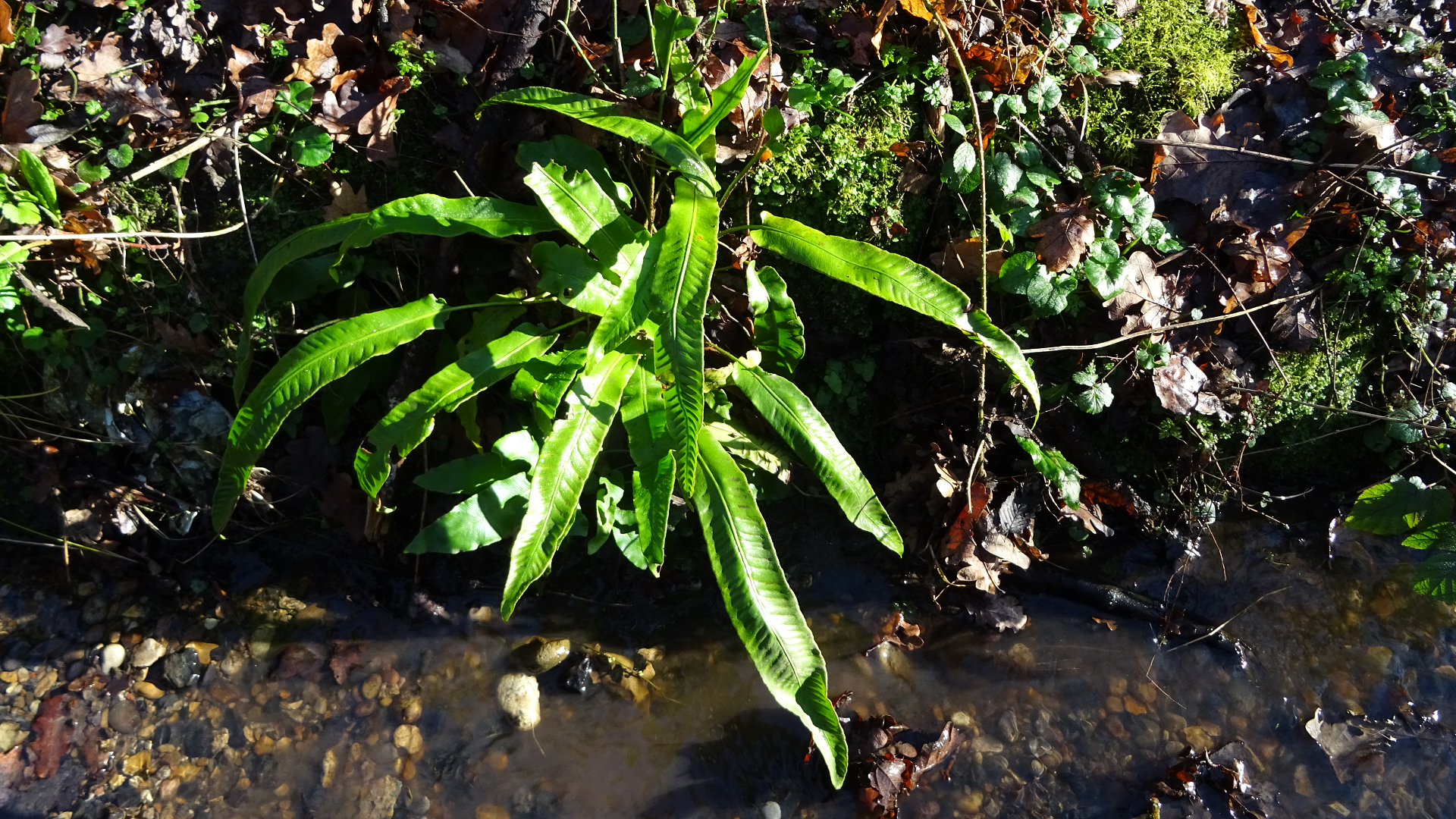
© Raymond Small TQ4793 19/01/2020
Hart's tongue has a preference for damp shaded locations. In Hainault Forest it is found growing on the bank of Olgits's ditch and the old reservoir area on Hog Hill.
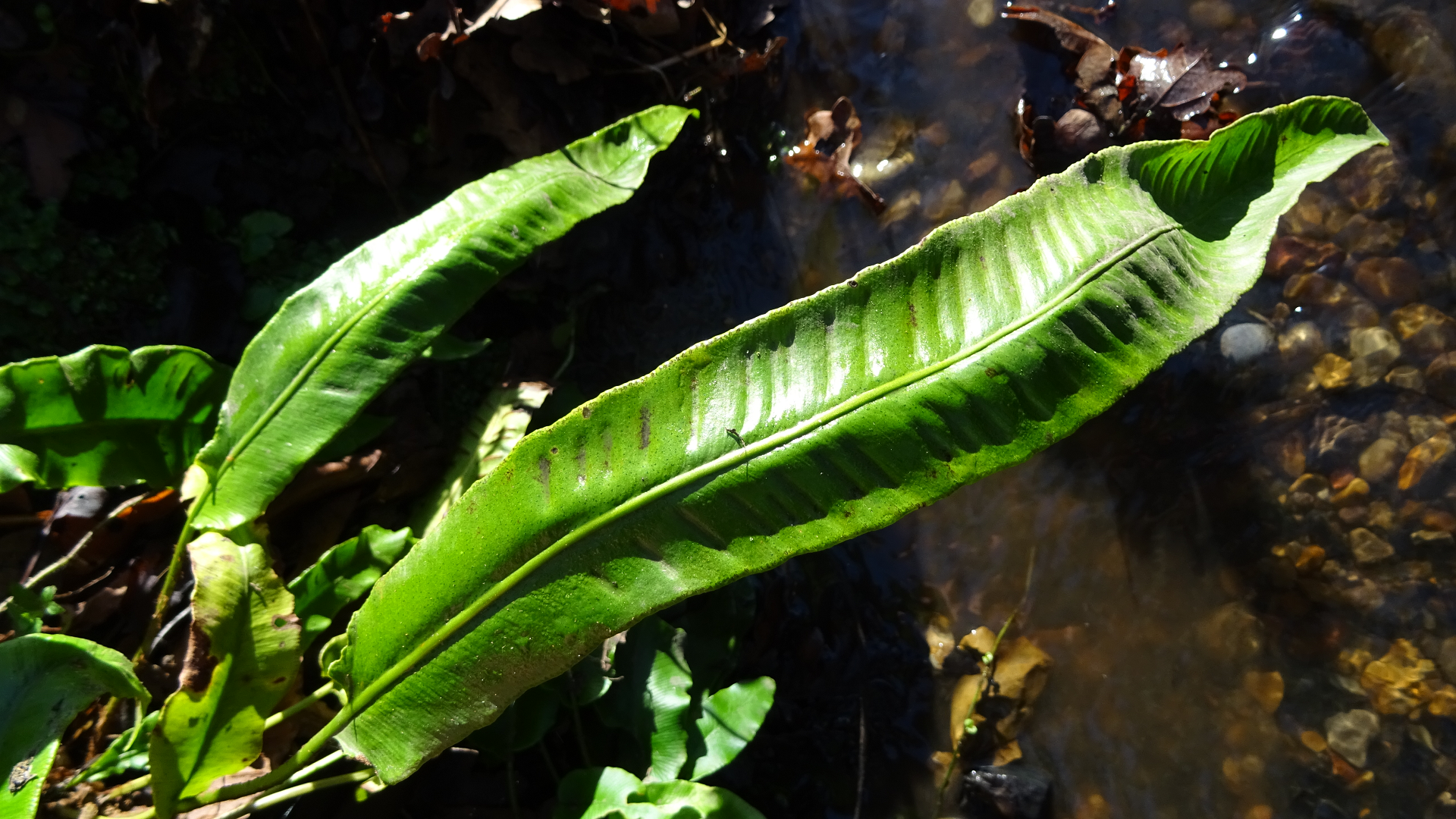
© Raymond Small TQ4793 19/01/2020
The fern resembles the shape of a deer's tongue. A hart is an adult male deer, hence the name. The long glossy-green leaves known as fronds have pointed curly tips.
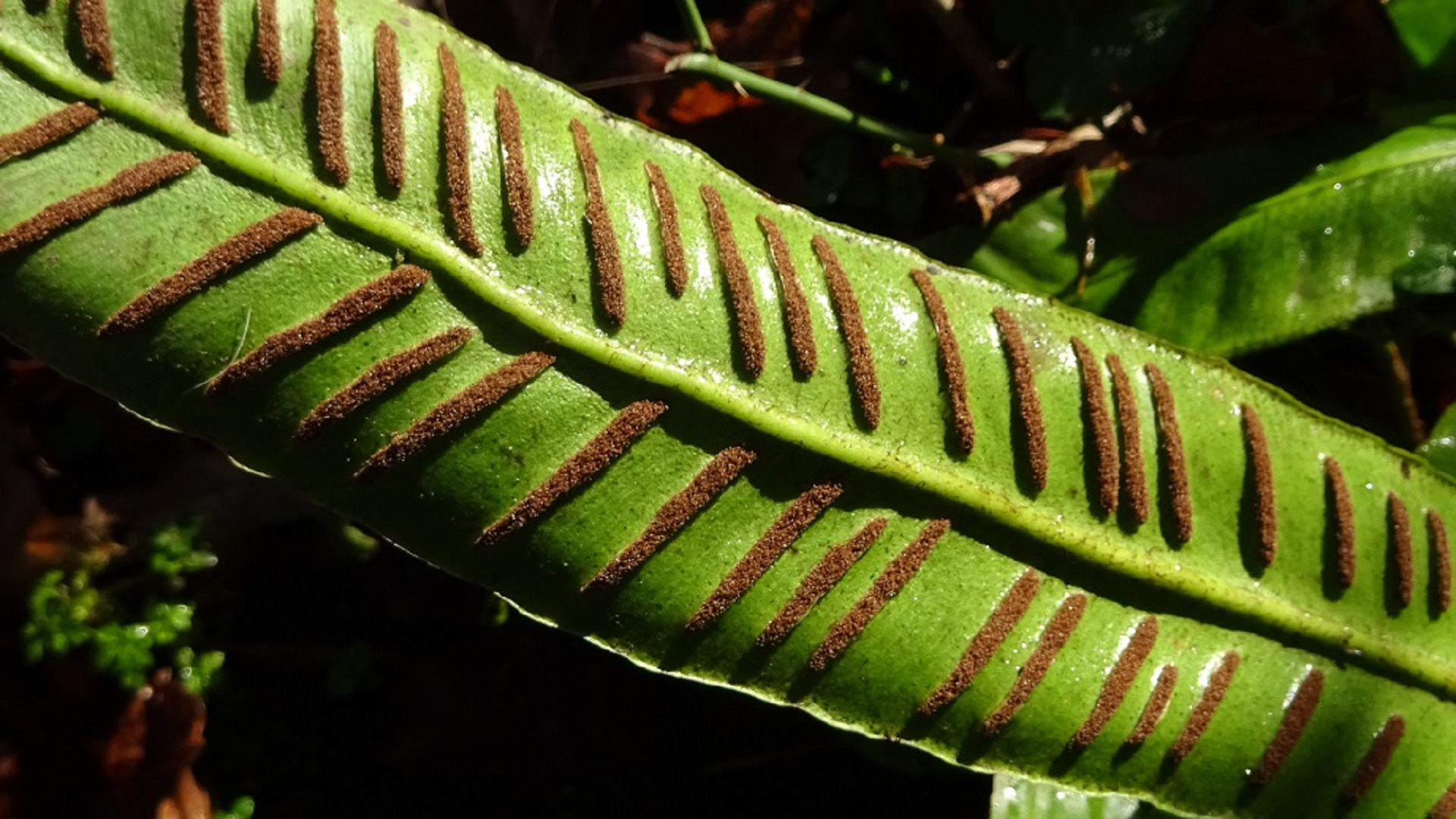
© Raymond Small TQ4793 19/01/2020
The plant grows up to 60cm tall and is seen throughout the year. The strap-like fronds 30-100mm in length unroll as they develop. The spore producing sori are arranged in oblique lines on each side of the midrib on the underside of the fronds. The spores are orange-brown.

© Raymond Small TQ4792 17/03/2019
Before the Hainault Forest Restoration Project, Hart's Tongue fern was a common growth on the walls of Foxburrow Barn.
BRACKEN
Pteridium aquilinum
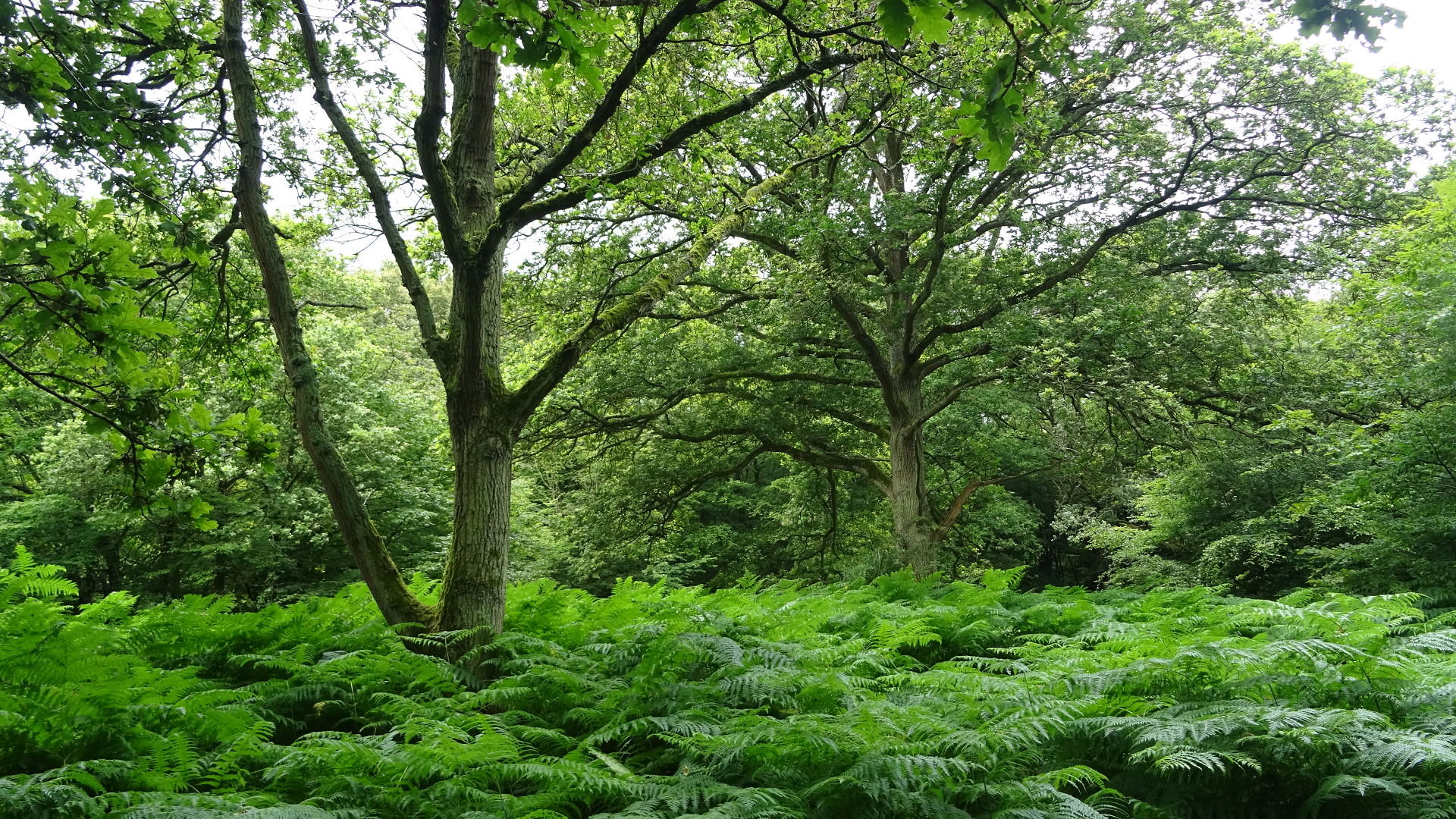
© Raymond Small TQ4793 05/07/2024
A common fern in the forest in the wooded areas and open spaces within the woodland especially under Silver birches. It is invasive and difficult to control and is a serious pest in Britain. It occurs worldwide. The whole plant dies down in autumn with the first frosts and the new vegetative frond unfurls in the spring. The large triangular compound frond which can be up to 2 metres in height is described as tripinnate, meaning that it has divided three times. Part of the background has been removed to highlight the single frond. Rarely produces spores in woodland.
MALE FERN
Dryopteris filix-mas
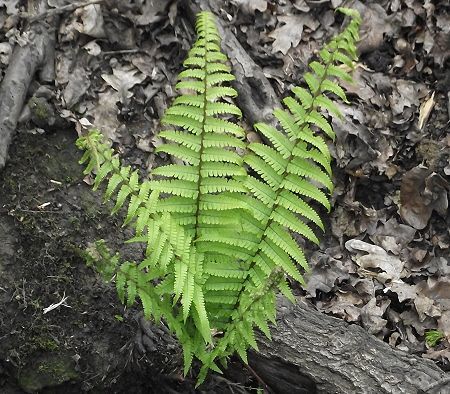
© Brian Ecott TQ4793 27/04/2016
Common throughout the forest especially in the damper, shadier parts of the woodland. Fronds ascend and arch, giving the plant a shuttlecock appearance. They can be up to a metre in length and are widest in the middle. The frond is divided into 20-40 pinnae. Each pinna (right) is broad at the base and tapers to a point. Each pinna is divided into pinnules. On fertile fronds the pinnules have 2 rows of kidney shaped sori on the underside. These contain the spores.
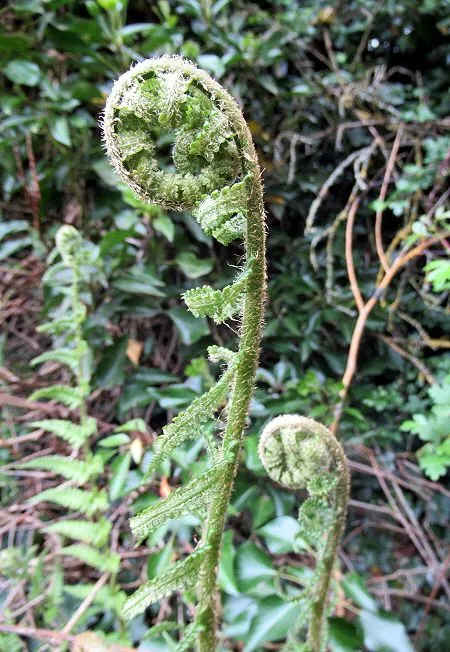
© Brian Ecott TQ4793 27/05/2018
Male fern unfurling.
BROAD BUCKLER-FERN
Dryopteris dilatata

© Raymond Small TQ4792 04/02/2022
Common in the forest especially in the shadier parts on the slopes behind the farm. Fronds can be up to 1 metre in length although usually 30-40cm. One third of the frond is stalk. Fronds arch and are more or less triangular in shape, deep green colour and tripinnate (i.e. divided three times). The first division produces a pinna. These are further divided into pinnules, and then pinnulets. On the stalk are scales and those particularly near the base are pale brown and have a dark brown line running through them which distinguishes the plant from other Buckler ferns.

Scales
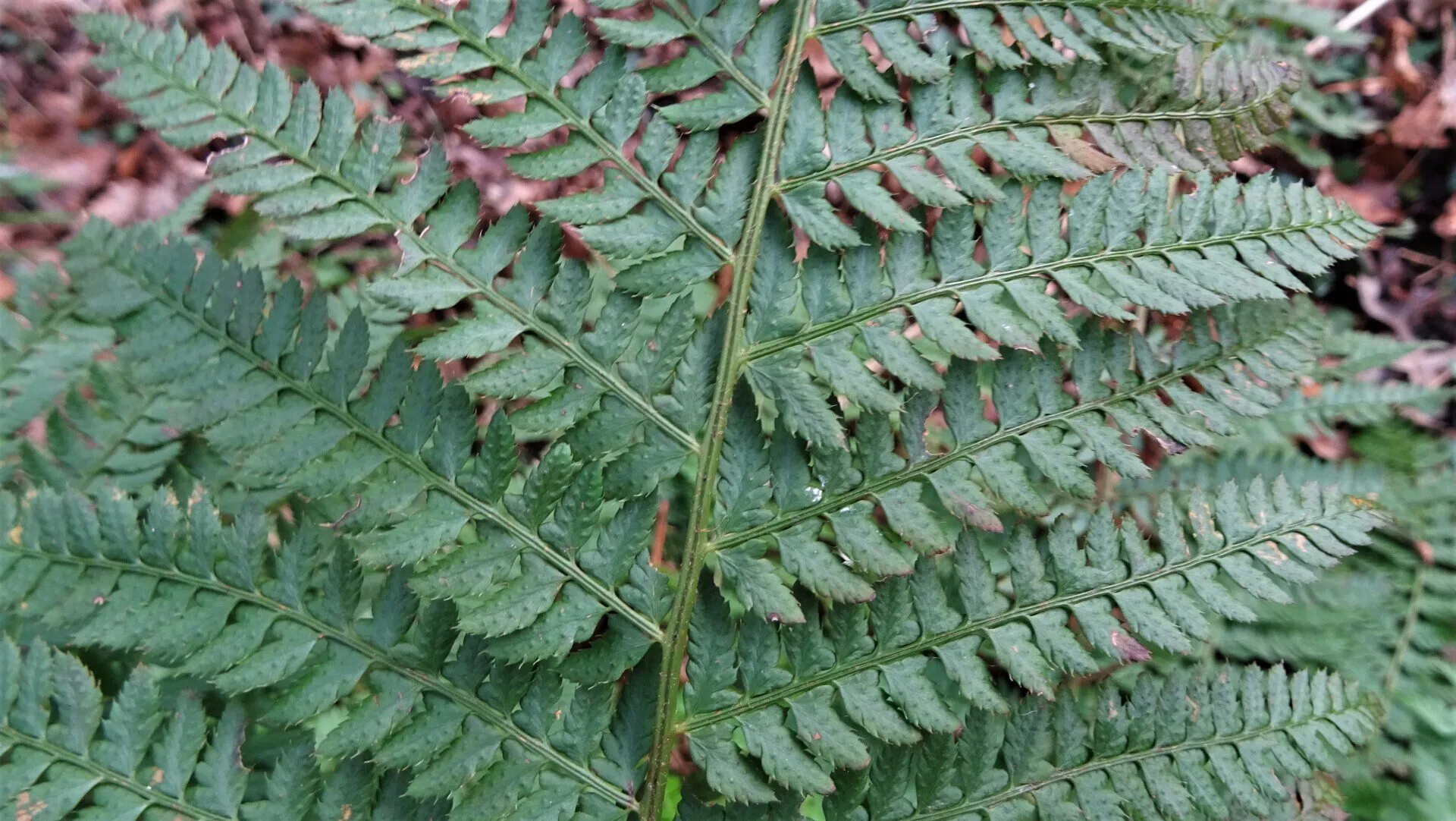
© Raymond Small TQ4792 04/02/2022
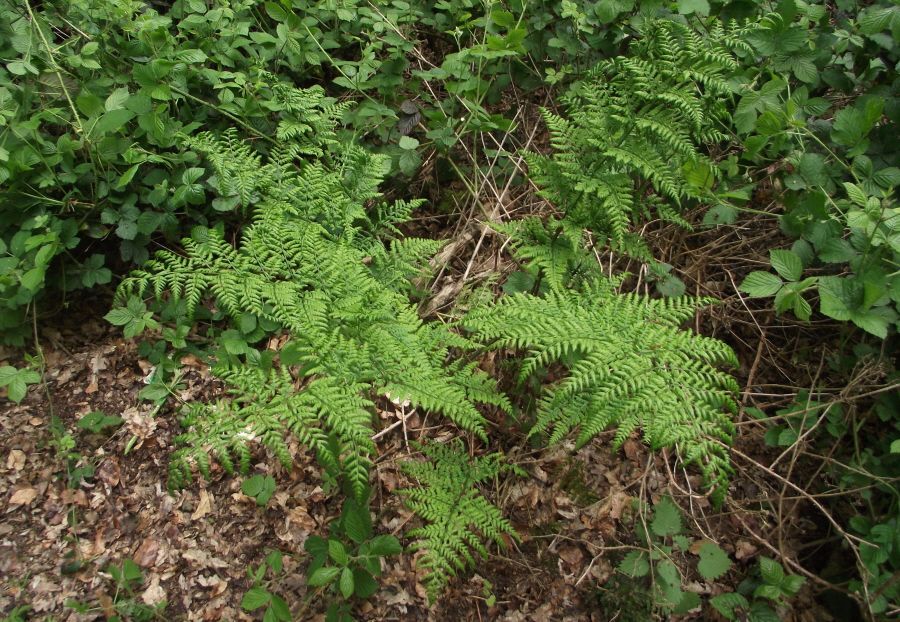
© Brian Ecott TQ4793 05/05/2017
Magnificent Broad buckler-fern on Dog Kennel Hill.
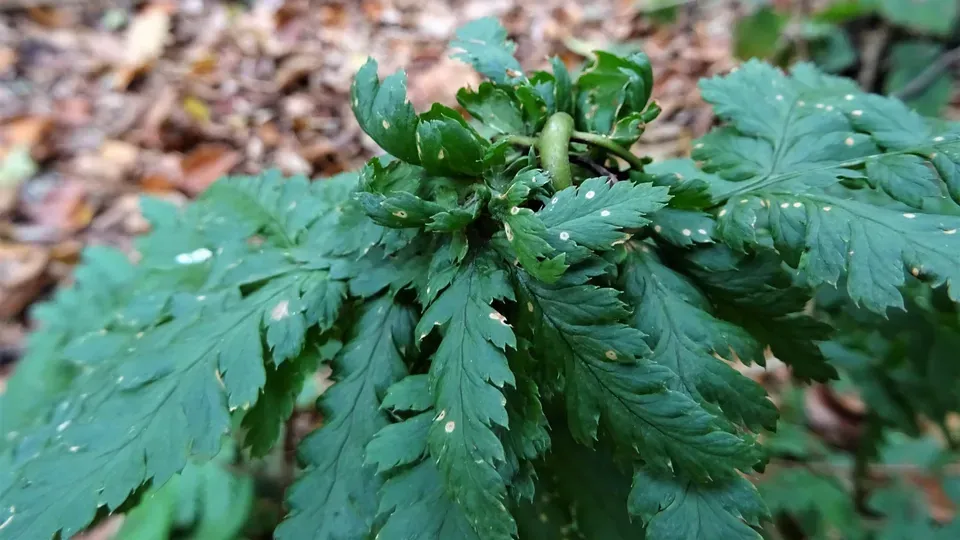
© Raymond Small TQ4792 05/11/2018
Mophead Galls caused by a fly appear as knots on top of Broad Buckler ferns.
SOFT SHIELD FERN
Polystichum setiferum
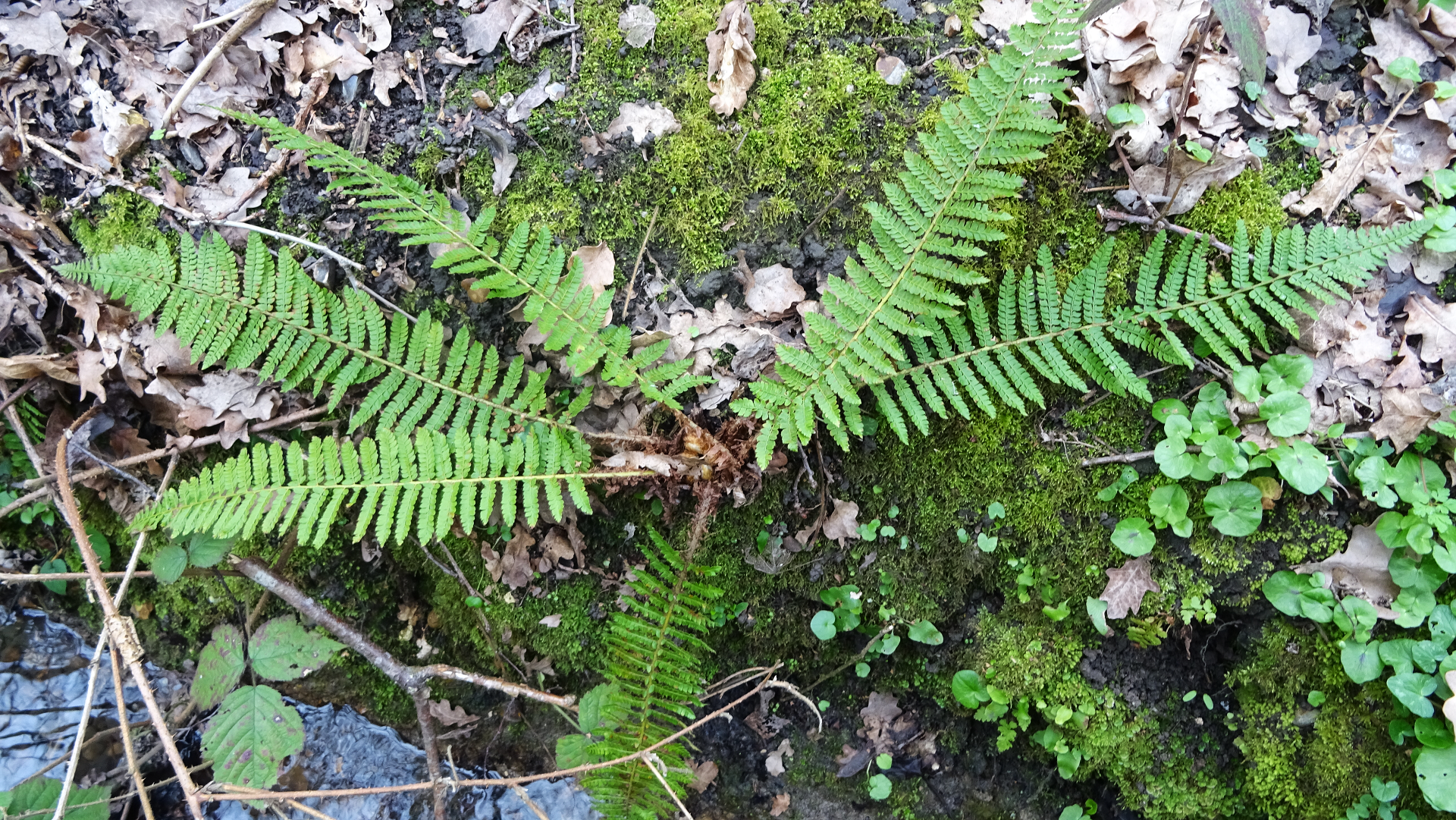
© Raymond Small TQ4793 22/03/2019
Rare in the forest. The fronds are 30-40cm. and bright green. They are bi-pinnate, and widest in the middle. About one-quarter of the frond is stalk covered in fine, light brown scales. The pinna are divided into pinnules which have a small stalk and are mitten shape. The prominent "thumb" running more or less parallel with the midrib of the pinna
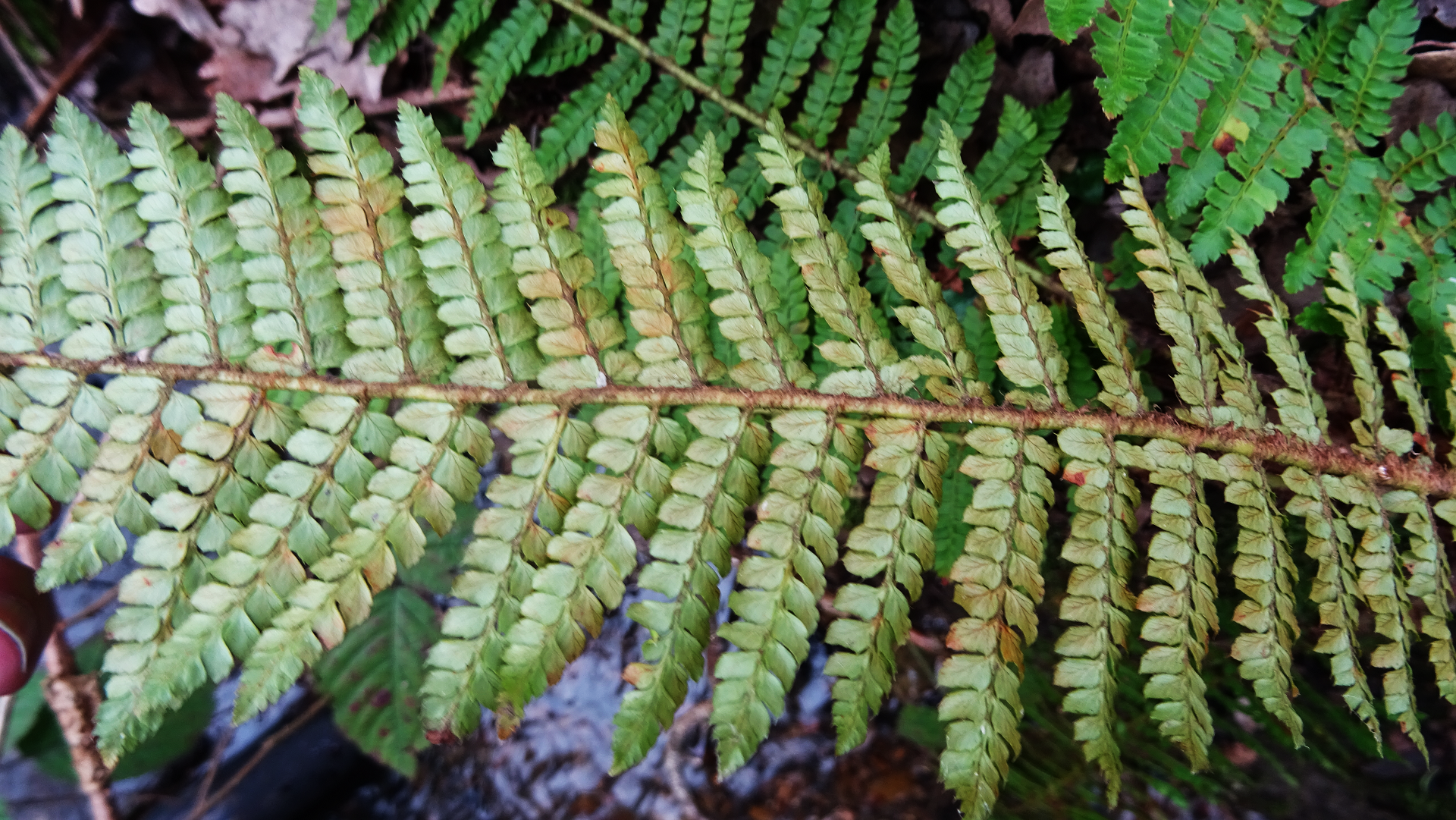
© Raymond Small TQ4793 22/03/2019
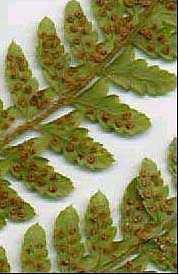
© Brian Ecott
Part of the underside of a fertile pinna showing the mitten-like pinnules with two rows of rounded sori.
POLYPODY FERNS
Polypodium
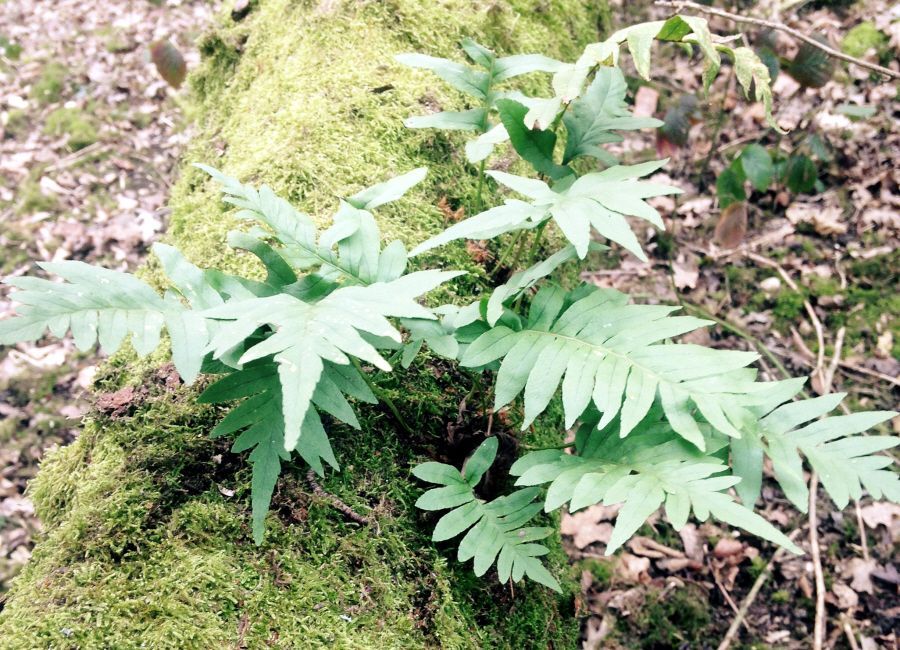
© Martin Bell TQ4793 08/03/2016
Western polypody fern
Polypodium interjectum in Hainault Forest and very rare species in Essex.

© Martin Bell TQ4793 08/03/2016
Western polypody fern
Polypodium interjectum.
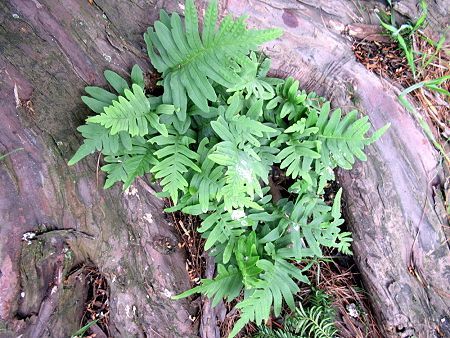
© Brian Ecott
TQ4693 17/09/2017
Common Polypody fern
Polypodium vulgare between the roots of a Yew tree at the front of All Saints Church, Chigwell Row.
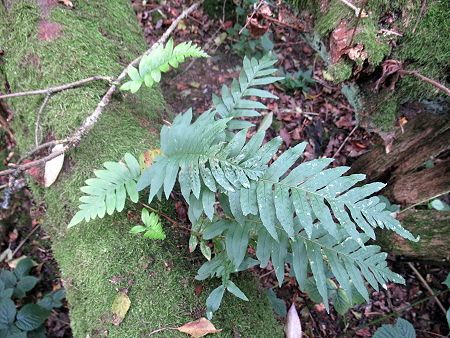
© Brian Ecott
TQ4793 17/09/2017
Western Polypody fern
Polypodium interjectum on a moss covered branch on Cabin Hill.
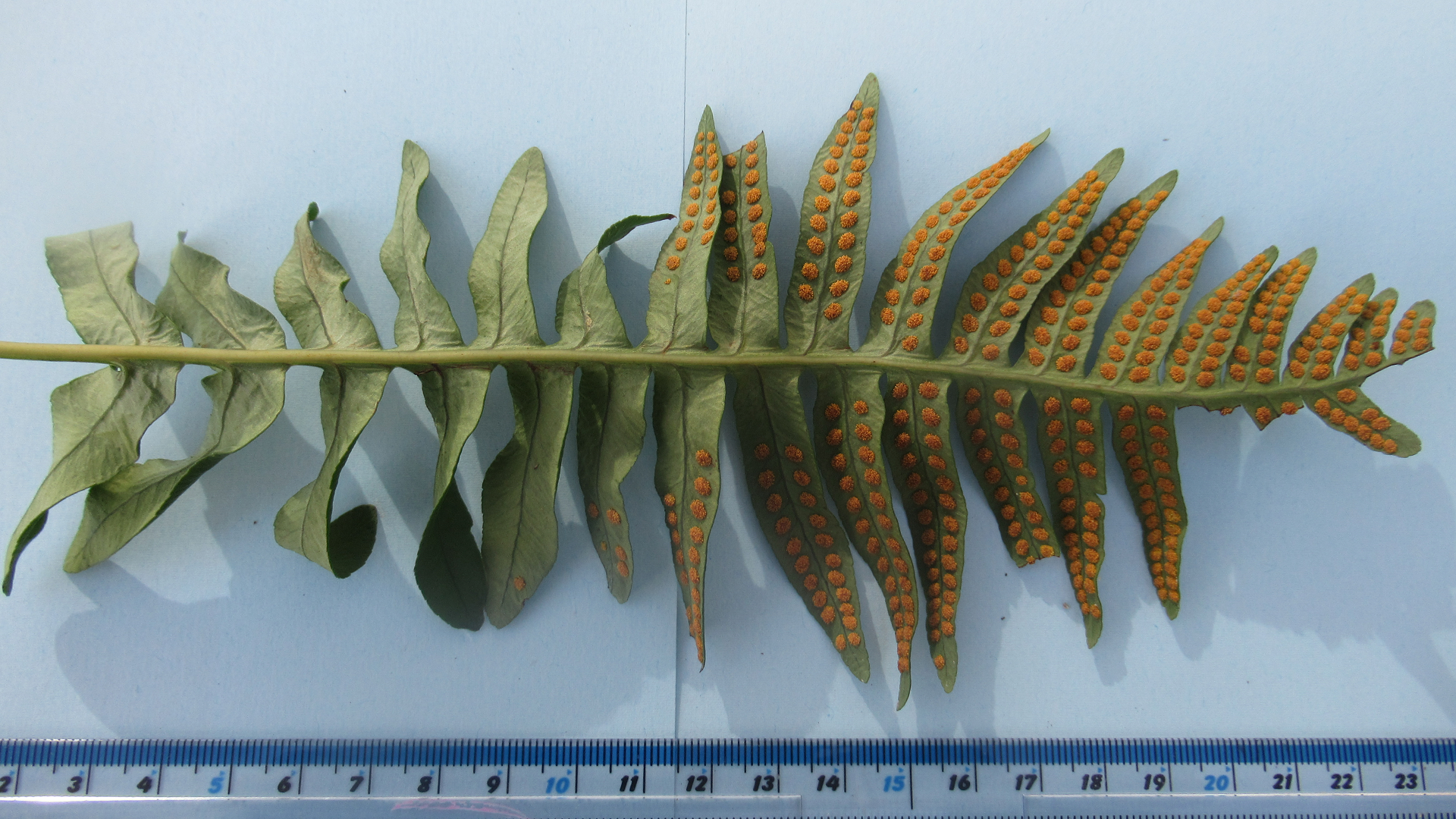
© Brian Ecott
Western polypody fern
Polypodium interjectum.
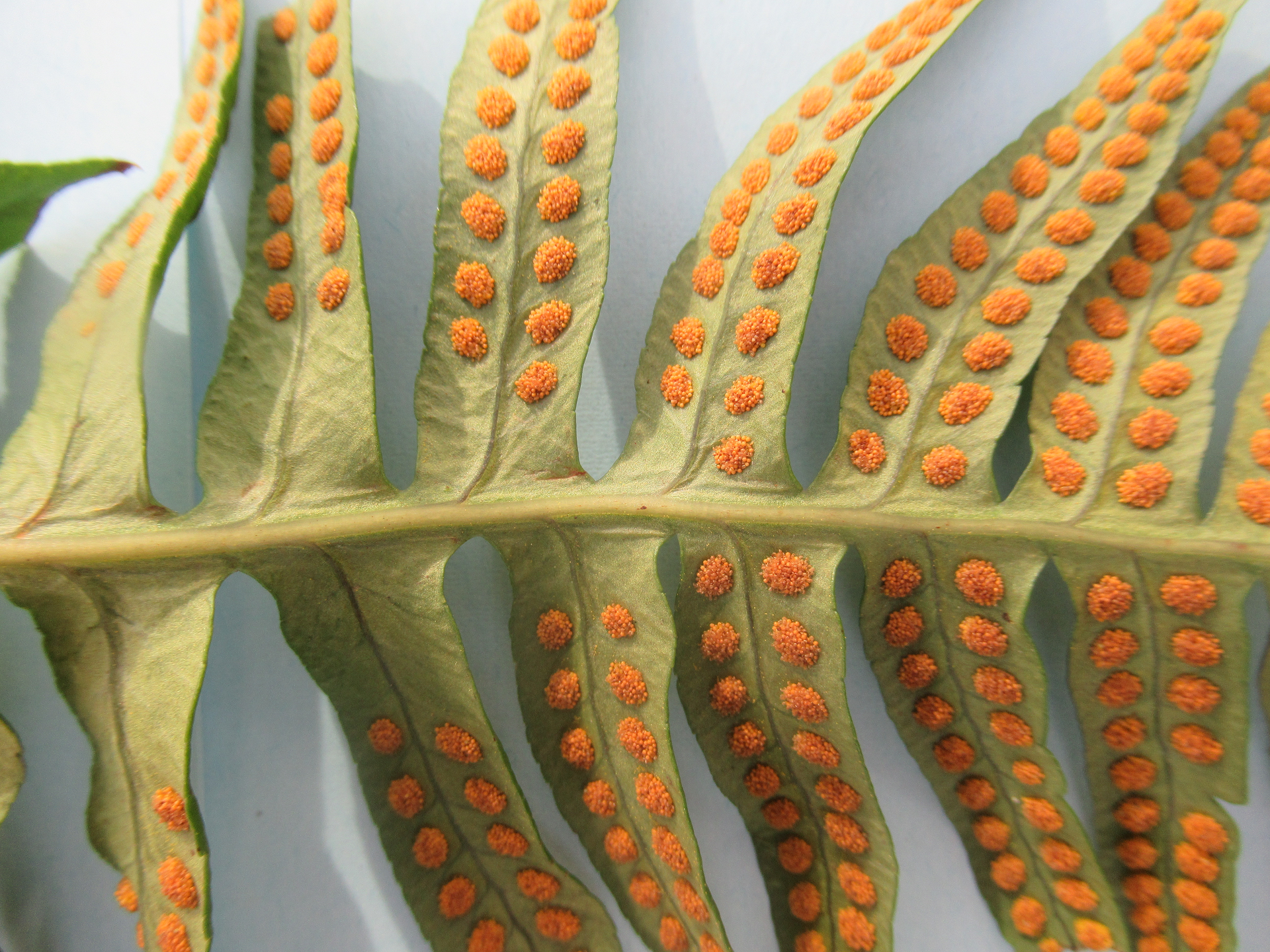
© Brian Ecott
Western polypody fern Polypodium interjectum.
Thanks to Dr Kenneth Adams for the identification of the polypody ferns above which are identified by the annulus and a count of the viable spores.
FIELD HORSETAIL
Equisetum arvense
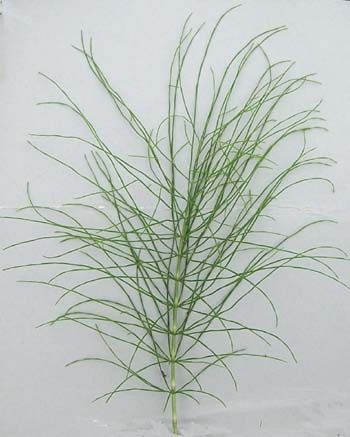
© Brian Ecott TQ4792
Field Horsetail found in the hedge, ditch and bank which runs from the second car park to the lake.
© hainaultforest.net. All rights reserved.

